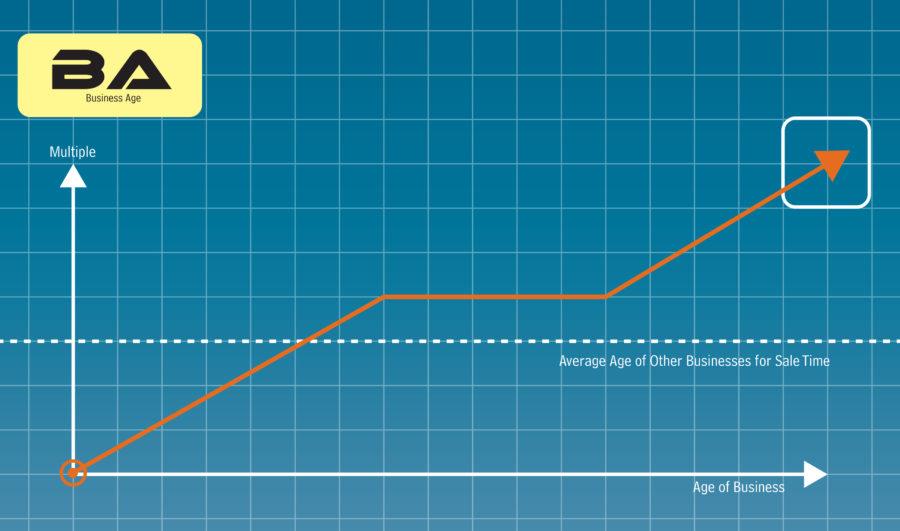Table of Contents
- Understanding the Concept of Website Flipping
- The Key Metrics for Evaluating a Websites Value
- Strategies for Successful Website Flipping
- Common Mistakes to Avoid in Website Flipping
- Enhancing Website Performance for Higher Resale Value
- Q&A
- Closing Remarks
Understanding the Concept of Website Flipping
Website flipping is a business practice that involves buying, improving, and then selling websites for a profit. This strategy is akin to real estate flipping, where investors purchase properties, enhance their value, and dispense them at a higher price. In the digital world, entrepreneurs scan the online marketplace for undervalued sites that have potential for growth. The key to success in this endeavor lies in the ability to identify websites that can be monetized effectively and then executing strategies to boost their performance.
To excel in website flipping, one must consider several vital factors that influence a website’s value. These include:
- Traffic: The volume of visitors a site attracts can significantly impact its selling price.
- Revenue Streams: A site with established income channels, such as ads or affiliate marketing, is more appealing.
- Content Quality: Unique, relevant, and high-quality content tends to attract organic traffic and retain users.
- SEO Performance: A website that ranks well on search engines has a higher intrinsic value.
After securing a prospective site, the next phase involves making improvements to enhance its overall marketability. Here are common enhancement tactics:
- Design Upgrades: A fresh, responsive design can significantly increase user engagement.
- Content Development: Regularly updating or expanding content can improve SEO and attract new visitors.
- Traffic Generation Techniques: Implementing SEO best practices, social media marketing, and email campaigns can boost site traffic.


The Key Metrics for Evaluating a Websites Value
When assessing a website’s value, several critical metrics come into play. Understanding these figures allows potential buyers or sellers to make informed decisions. Traffic analytics are paramount; this includes the number of monthly visitors, the consistency of that traffic, and its sources. Relying on tools like Google Analytics or SEMrush can provide insights into how well the site attracts its audience. Moreover, the site’s bounce rate can indicate how engaging the content is—lower bounce rates often suggest a more valuable platform.
Another significant aspect involves the monetization methods employed by the site. Whether the website generates revenue through affiliate marketing, ads, or paid memberships, evaluating its income streams is essential. A breakdown of earnings can also offer insights into the site’s sustainability. Readers should consider factors like the average monthly income, revenue consistency over the past year, and the profit margins that enhance the site’s value. Here’s a simplified representation of a website’s income sources:
| Income Source | Average Monthly Income | Percentage of Total Income |
|---|---|---|
| Affiliate Marketing | $300 | 30% |
| Advertisements | $500 | 50% |
| Sponsored Posts | $200 | 20% |
the site’s SEO performance is a critical metric for determining its long-term value. Key elements such as domain authority, backlink profiles, and keyword rankings heavily influence a website’s visibility. Comprehensive analysis of how well the site performs on search engines will not only reveal its current standing but also its growth potential. This also includes examining site loading speed and mobile responsiveness, as these factors greatly influence user experience and, ultimately, conversion rates. Investing time in evaluating these aspects can significantly affect the valuation in the marketplace.


Strategies for Successful Website Flipping
One of the foundational steps in flipping a website successfully is conducting thorough market research. Understanding your target audience and the trends in your chosen niche can significantly influence the website’s valuation and appeal. Utilize tools like Google Trends and SEMrush to identify popular topics and keywords that attract traffic. This initial research will allow you to evaluate sites based on their potential for growth and monetization. Key areas to focus on include:
- Niche profitability: Examine competitors and their revenue models.
- Traffic sources: Review where existing visitors are coming from.
- Content quality: Assess the value and uniqueness of the content.
After acquiring a website, enhancement is essential for improving its market value. Start by optimizing on-page SEO elements such as titles, meta descriptions, and internal linking strategies. Additionally, consider updating content to make it relevant and valuable to users, and ensure that the site loads quickly for better user experience. By implementing these upgrades, you not only increase the website’s appeal but also its revenue-generating potential. Remember to focus on:
- Mobile optimization: Ensure the site is responsive for all devices.
- User experience: Enhance the design for better navigation and engagement.
- Monetization strategies: Explore affiliate marketing or ad placements.
when it comes time to sell the website, effective promotion becomes crucial. Create a detailed pitch that highlights the site’s strengths, current traffic levels, and revenue streams. Utilize platforms like Flippa and Empire Flippers to reach potential buyers. A well-crafted and data-supported listing can dramatically increase your chances of making a successful sale. Key elements to include in your sales pitch are:
- Traffic analytics: Provide a snapshot of website performance over time.
- Revenue reports: Highlight earnings from various streams.
- Growth potential: Suggest future strategies for potential buyers.


Common Mistakes to Avoid in Website Flipping
Website flipping can be a lucrative venture, but many novice investors often stumble on the same pitfalls. One of the most common mistakes is overvaluing a website. When assessing a potential flip, it’s crucial to rely on solid metrics such as traffic stats, revenue history, and growth potential rather than gut feelings or superficial features. Launching into a flip without proper valuation can lead to substantial losses when the market reality strikes.
Additionally, many flippers underestimate the importance of due diligence. Skipping essential checks can result in buyers acquiring sites with hidden issues, such as poor SEO health, existing penalties, or undesirable backlinks. Taking the time to conduct thorough audits and market comparisons can prevent buyers from investing in websites that may require costly fixes later. Always ensure to research the site’s history and gauge its overall performance meticulously.
Another frequent error involves neglecting effective marketing strategies post-purchase. A new owner might assume that the existing traffic and revenue will naturally continue, overlooking the changes needed to optimize the website for better performance. It’s essential to craft a robust marketing plan, incorporating SEO improvements, content updates, and social media engagement to maximize the site’s potential. Failing to adapt or innovate can lead to stagnation rather than profitable growth.


Enhancing Website Performance for Higher Resale Value
Improving the performance of your website is crucial for driving traffic and ensuring user satisfaction, which directly translates to a higher resale value. To begin with, consider enhancing loading speeds. Websites that load within three seconds significantly reduce bounce rates. Techniques like optimizing images, utilizing caching strategies, and choosing a reliable hosting provider can help achieve these speeds. Monitor performance regularly using tools like Google PageSpeed Insights to identify bottlenecks and make necessary adjustments.
Another pivotal aspect is the user experience (UX) design. A clean, intuitive interface is not just aesthetically pleasing but also crucial for retaining visitors. Ensure that your website is mobile-friendly, as a significant portion of traffic originates from mobile devices. Implementing responsive design techniques, easy navigation menus, and quick access to information can make a notable difference. Regularly collecting user feedback can also provide insights on areas needing improvement.
Lastly, leverage search engine optimization (SEO) strategies to enhance visibility and drive organic traffic. This involves optimizing your content with relevant keywords, ensuring that meta descriptions are compelling, and incorporating backlinks from reputable sources. Further, maintaining a blog with regular updates can foster engagement and keep content fresh. Below is a simple table comparing different optimization techniques:
| Technique | Impact on Performance | Time to Implement |
|---|---|---|
| Image Optimization | Improves loading speed | 1-2 hours |
| Mobile Responsiveness | Enhances UX | 1-3 days |
| SEO Optimization | Boosts visibility | Ongoing |
Q&A
Q&A: Understanding Website Flipping
Q: What is website flipping? A: Website flipping is the process of buying a website, improving its content, design, or SEO, and then selling it at a profit. It’s similar to real estate flipping, where investors buy properties, make enhancements, and resell them for a higher price.Q: How do people determine the value of a website? A: The value of a website is typically assessed based on various factors including its traffic, revenue, engagement metrics, domain authority, and the quality of its content. Multiples of monthly revenue or total traffic can also provide a good estimate of worth.
Q: What kinds of websites can be flipped? A: Virtually any type of website can be flipped, including e-commerce sites, blogs, niche sites, and membership platforms. The key is to find websites with potential for improvement and growth.
Q: What steps are involved in flipping a website? A: Flipping a website generally involves the following steps:
- Research and Purchase: Identify a website with growth potential and purchase it.
- Enhancement: Improve its design, user experience, content quality, and SEO.
- Monetization: Utilize effective monetization strategies, such as affiliate marketing or ad placements.
- Marketing: Drive traffic through social media, PPC advertising, or content marketing.
- Sale: Once improvements yield results, list the site for sale on platforms like Flippa or Empire Flippers.
Q: What skills are beneficial for successful website flipping? A: Successful flippers often possess skills in web design, SEO, digital marketing, and content creation. Analytical skills are also crucial for assessing potential purchases and measuring the success of enhancements.
Q: Is website flipping a risky venture? A: Like any investment, website flipping carries risks, including fluctuations in market demand and changes in search engine algorithms. However, informed research and sound strategies can mitigate risks significantly.
Q: What are some common mistakes to avoid when flipping websites? A: Some pitfalls to avoid include:
- Overestimating the value of a website without proper evaluation.
- Investing too much time or money into a website that may not yield returns.
- Neglecting to conduct proper due diligence before purchasing a website.
Q: How can someone get started with website flipping? A: To get started, research the market for potential websites to flip, understand valuation methods, and learn about basic SEO and website management. You can begin with small investments and gradually scale up as you gain experience.
Q: Are there resources to learn more about website flipping? A: Absolutely! There are numerous online courses, e-books, forums, and blogs dedicated to website flipping. Platforms like YouTube and specialized webinars can also provide valuable insights from experienced flippers. With this Q&A, readers should have a clearer understanding of what website flipping entails and how they might engage in this potentially lucrative venture.

